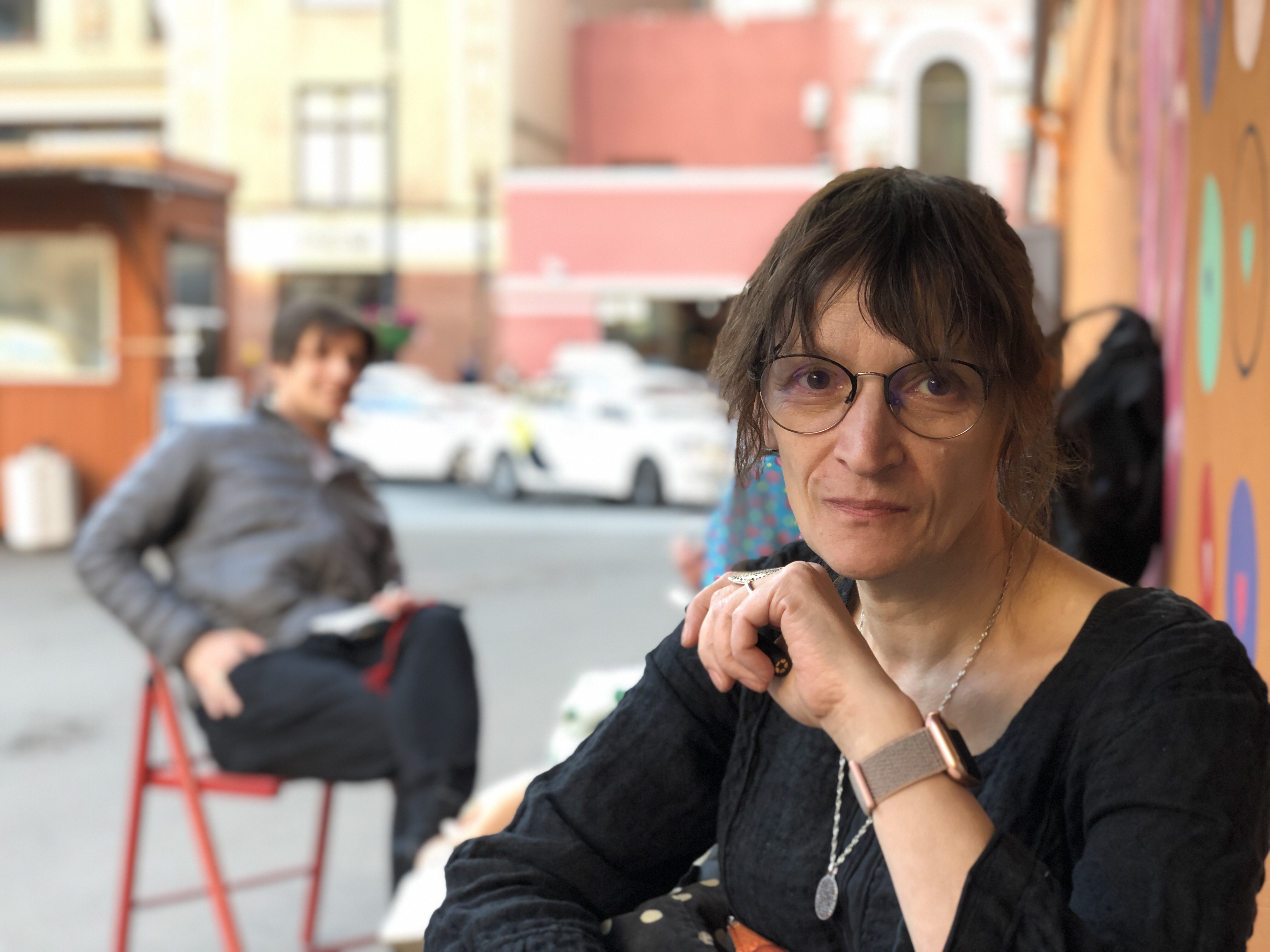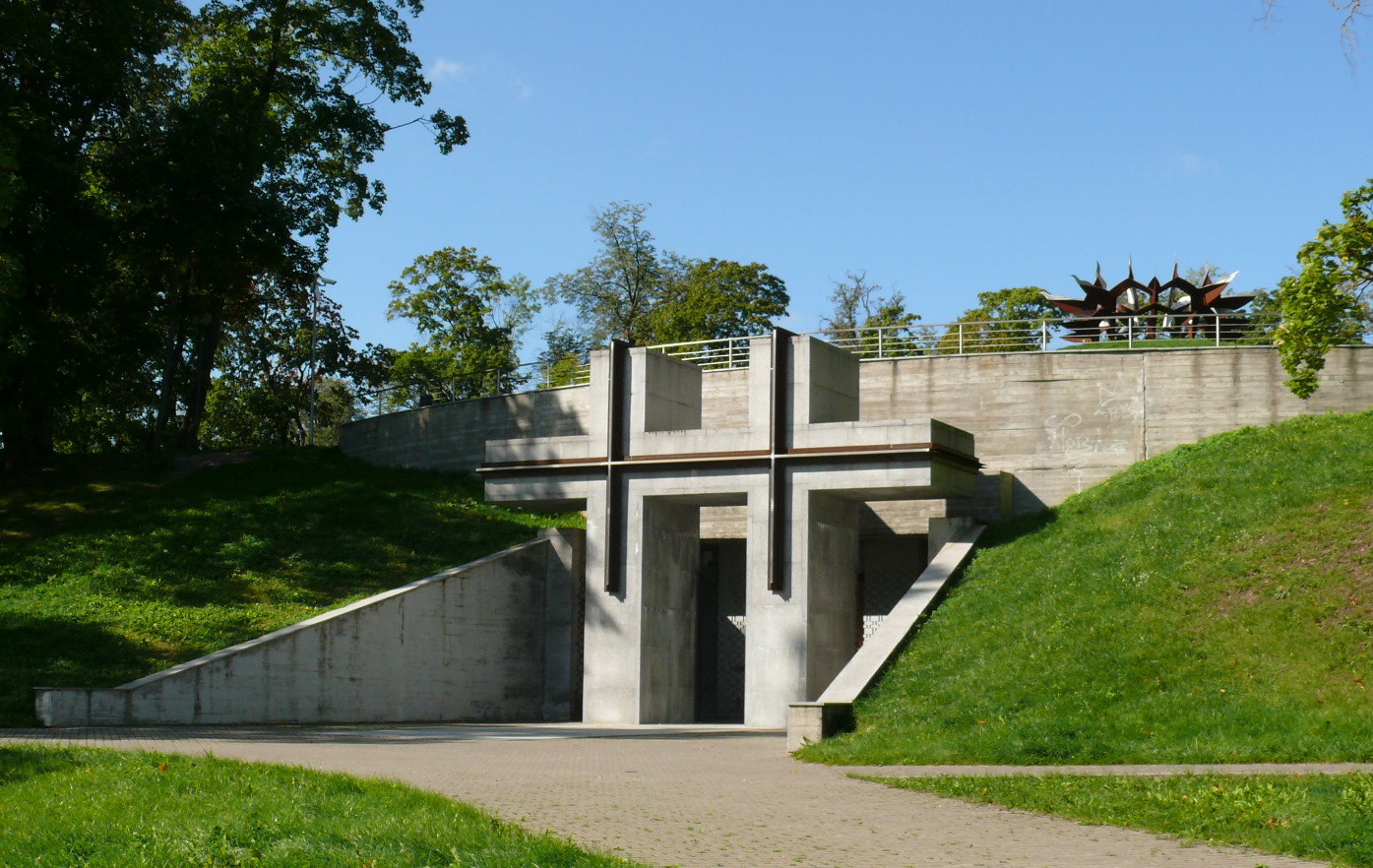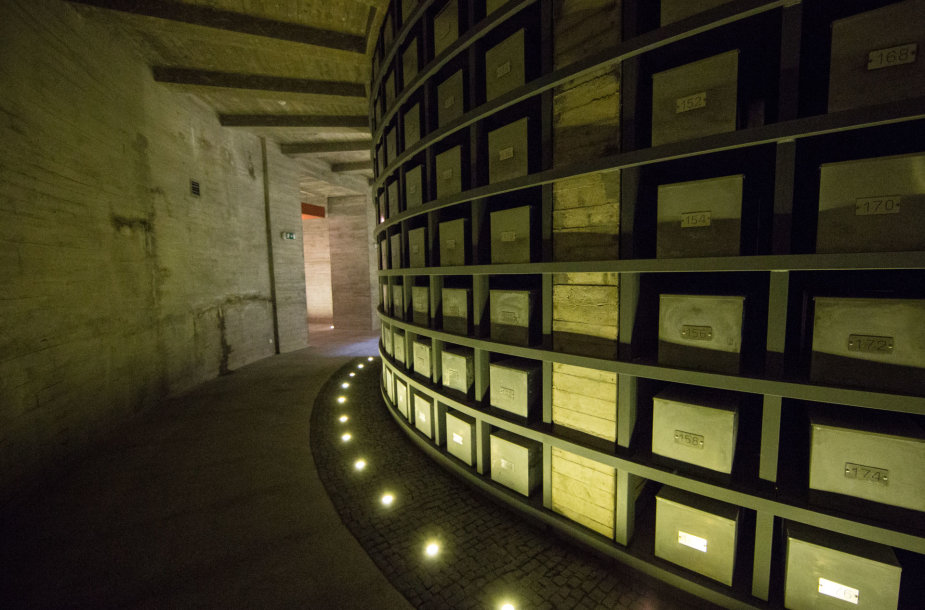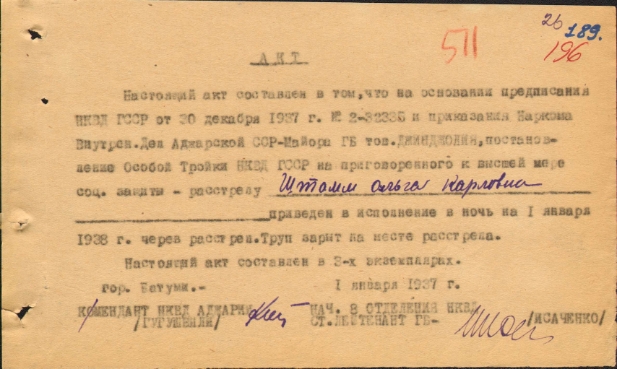


For acquiring information about international experience, the head of Memory and Disinformation Studies at IDFI, Anton Vatcharadze talked with Irina Flige – human rights advocate and researcher, who has been studying the mass graves of the victims of the Soviet regime since the 1980s. Since 2002, she has been a director at the research centre, Saint Petersburg Memorial. In 1997, Irina Flige together with Veniamin Iofe and Yuri Dmitriev discovered a mass burial site of the victims of Soviet terror – Sandormokh. Irina Flige’s book “Sandormokh. Dramaturgy of Meanings” is one of the most important works about this particular place and the Soviet mass graves in general.
Anton Vatcharadze asked questions about the identification of remains, usage of modern technology in this process, peculiarities of executions, organization of memorials, common burial procedures for the representatives of different confessions and related dilemmas in the society. Irina Flige shared international experience and her knowledge around these issues with IDFI which will contribute to the work of the commission created for the study of the mass grave discovered in Adjara and all of the interested parties involved in this process.

Full interview:
Irina Flige: First of all, I will list what needs to be done. This does not mean that the activities should follow this order. Presumably, they won’t because the public, state and different religious interest do not meet one another.
First of all, full anthropological expertise of the bodies discovered in graves should be carried out. You should find qualified anthropologists who will be able to carry out reliable expertise of every part of the remains and create 3-D portraits. This is very important especially when contemporary technologies make this possible. Through the 3-D portraits, it will be possible to identify those individuals whose photos are preserved but not everyone because I warn you, we should consider the possibility of mistakes made during the research. Through this method, still, it is possible to identify many individuals. A photo of a repressed individual can be preserved at the archival department, attached to the criminal case or at the relatives’ house. It is essential and important to solve this issue this way.
Second- before the anthropological expertise, the bodies should not be buried. If we allow this to happen, then we should consider that we will lose all of the materials for identification.
At the next stage, the Polish practice should be considered, which I like a lot. After reaching an agreement with the medical institution, the Polish announced on a state level about the creation of a DNA database. All of the newspapers published this information, it was also broadcasted by the televisions and other media sources. They called for the people who lost their ancestors and relatives because of the repressions to take DNA tests. Of course, it was free, covered by the state program. Today, in Russia, many people are ready to take a test on their expanses.
Anton Vatcharadze: In Georgia, the DNA analysis for one body and its comparison with the samples of descendants costs approximately 1000 GEL.
Irina Flige: These technologies are becoming cheaper. In the US, it costs $100, in Russia – $500, $400 or $300. It is quite a simple procedure – saliva or blood sample of the closest relative is used as a material. Children of the repressed are not alive sometimes and the probability that the grandchildren are alive is bigger. Therefore, it is important to take the analysis of the grandchildren for the results to be trustworthy. If we research a child – a son or a daughter, the trustworthiness of the result is greater while in the case of a grandchild, it decreases twice. However, if we study two grandchildren, the reliability of the result still increases.
Anton Vatcharadze: In come cases, only great-grandchildren are alive. A lot of has passed.
Irina Flige: In such a case, it is necessary to take samples from many great-grandchildren. If there are 3, 4 or 5 great-grandchildren, it is essential to take DNA samples from all of them. If society is interested, it is important how people are informed. For instance, the Polish are motivated and hope that sooner or later they will find all of the graves and remains. Maybe you have just discovered the grave in Batumi but have not found all of the victims. For this, you continue the research, find other ones and the DNA database will also increase.
Meanwhile, the media should start reporting about the program. The sooner the collection of DNA materials begins, the more successful the results will be. Unfortunately, the children of many repressed are already 80-90 years old. They might not be alive when their fathers or mother get buried but, in the end, they will be identified and people will know about this. I am absolutely sure that this practice will work out in Georgia successfully as well.
Anton Vatcharadze: What do you consider to be another difficult issue in this process?
Irina Flige: In Georgia, of course, there are problems related to the religious confessions, which is absolutely normal as long as we work on the memory. Different confessions have different perspectives on memory. In this case, I would advise you to consider what Lithuanians did it Tuskulenai.[1]
There, of course, the population is Catholic, but this practice can be helpful for you too. The excavations of mass grave started in Lithuania and all of the discovered remains (similarly to you) were placed in the numbered boxes. The metal boxes were taken to the pantheon and sealed hermetically so that anthropologists will be able to open and study them in the future. Lithuania is a poor country, they do not often have full financial recourses so that the anthropologists needed some time to preserve the bodies and have free access to them in the future. Therefore, this pantheon is a monument and a common grave simultaneously. Later the relatives of the repressed made contact with the researchers and several bodies were identified. All of these happened when the genetical expertise was still expensive. After the identification, each box was assigned a name.

Memorial Complex of the Tuskulenai Peace Park, Vilnius

The Pantheon of the Bodies Buried at the Memorial Complex of the Tuskulenai
The expertise will give you the information about gender, age, execution site and date, which you already know.
Anton Vatcharadze: No, we do not know exactly whether the grave discovered in Adjara is from 1937 or 1938.
Irina Flige: As a result of anthropological expertise, a person’s image and relevant data will be printed on the box. For instance: woman, 28, executed.
Anton Vatcharadze: In Georgia, a qualified anthropologist with an international diploma carried out the expertise of the hip bone of one of the discovered bodies. She found out that this was a woman, 22-37 years old – interval of 15 years… You mentioned the exact age, 28. Is there a method for establishing the exact age? Let me remind you that the youngest person executed in Adjara was a woman, 20 and the oldest – a man, up to 60 years old.
Irina Flige: I have heard that if a woman is too young, it is easier to establish her age. For instance: 15-17 years old. However, the bigger the age is, the bigger the interval becomes.
Now, let’s discuss how the work should continue – you have boxes and images, you know the approximate age of the repressed, the national program has started – the creation of the database of the descendants. Next, all of this should be united and coincide in time and space. Now, imagine how this monument looks. There are images in some places, and images and names – at other spaces.
This process won’t be fast. But if you have started, it will proceed and everything will be united finally. The database of those who are alive will create a long list of relatives of those whose bodies have not been found yet [out of the 1050 executed in Adjara, only the remain of 150 are discovered]. This will lead to the search for the other mass graves. I do not mean the direct expedition and excavations but the public demand.
Anton Vatcharadze: Yes, Irina. There is another issue… For example, the body is identified, we have an image, name and surname. Children or grandchildren come and say that they have a family grave and want to rebury their relative there. What should we do in this case?
Irina Flige: Of course, the family has a right to decide where their ancestor should be buried but, at the same time, I consider that the photo and the name should stay on the box together with the text that this person is buried at this place. The box will remain empty.
However, you need to be careful as you should discuss with the relatives when the expertise can be considered finished and how precisely the person was identified. It should be explained to the family that if the body remains at the pantheon, not only the family but every visitor will be able to commemorate their relative. They should be informed that, at the Pantheon, the body will be buried in a box with appropriate temperature and anthropologists will always have access to it for future research in the case of a mistake… If there is a mistake, what should we do with the reburied body? If the family still decides to rebury the body, still, a name and a photo should stay at the Pantheon. It should be negotiated with the family. If we, for instance, discuss the issue of military mass graves, very often, the family will not want to rebury the body and prefer their ancestor to be buried together with his companions in arms.
Anton Vatcharadze: I want to attract your attention to such case – after Georgia gained independence, the Muslim population of Adjara started converting to Christianity. For this, there might be some cases when, for instance, the great-grandfather was Muslim and the descendants are Christians. According to which confession should the body be buried?
Irina Flige: It is up to family’s decision. My great-grandmother converted to Orthodox Christianity from Catholicism after her marriage and after her death, she was buried according to the Orthodox tradition.
Anton Vatcharadze: Yes, but it was your great-grandmother’s decision. This might be the case when a person was so devoted Muslim that he or she did not want to be buried according to the Orthodox tradition.
Irina Flige: Yes, but it is still up to the family’s decision. Yes, this is violence, ideological violence but this should not have a public character, which is a crime.
I don’t approve changing the religious affiliation of an ancestor but we cannot tell the family how to behave regarding the religious issues. So, if a person has a family which has changed the confession, the family should decide according to which ritual and customs their ancestor will be buries. Meanwhile, there is an issue which we often forget. In the first half of the XX century, many people were atheists.
Anton Vatcharadze: I was going to raise this issue now.
Irina Flige: As the children also know that they were atheists, there cannot be talking about one particular ceremony. Therefore, at this Pantheon, secular as well as religious ceremonies are being held.
We had an interesting story. You may know that since 1989, we visit the island, Solovetsky each August [2] to mark the day of commemoration of the victims. We visit the place where the bodies discovered in the 1990s were buried. Our group is always a leader in commemorating the victims and tolerance as it is composed of the people of different confessions. I suddenly found out that three people were added to our group, they were coming to pray at the monastery and joined us spontaneously. Before the departure, the Orthodox pilgrims announced that the funeral ceremony was necessary and they started praying at the place. In the meantime, one Polish woman started reading the Catholic prayer, another woman started reading Kaddish. [3] At that moment, I realized that something went wrong and although I am not an atheist, I declared that someone should have made a speech for atheists and started listing their names. This is how all of these happened spontaneously. I do not think there will be any problem in Georgia either.
Anton Vatcharadze: Currently, the bodies are placed in the boxes and these boxes are located at the Orthodox church in Batumi.
Irina Flige: This is not correct. There are Muslims as well… Pantheon should stand separately as a common place for every confession. This should be a monument dedicated to every executed person.
Anton Vatcharadze: Do you consider it appropriate to turn the polygon, the most tragic place, where the people were executed and thrown in a pit, into a pantheon?
Irina Flige: This should be organized at the same place. I always argue that the monuments should be located at the execution sites as long as they are already historical places. However, they should be turned into a normal, humane cemetery…
This will to some extent solve the religious disputes as long as, at this place, Christian and Muslim symbols can be located side by side. There is no need to find another place. They died and were buried here and this place will be dedicated to their commemoration. So, the pantheon should be located at this place. In general, historically, there are similar burial traditions, for instance, in the wall. This is a memorial wall but, visually, the pantheon is already a commemorative monument.
I am certain that you have qualified architects and artists who can think of how the monument can unite both Muslim and Christian symbols.
Anton Vatcharadze: Or the secular monument can be better.
Irina Flige: No, this won’t work. In general, the monument concerns friendship, mutual commemoration – when does this happen? When common language is found regarding terror and its victims.
Anton Vatcharadze: You are talking about an ideal place, which can be an utopia for Georgia.
Irina Flige: I know,this is an utopia in the post-Soviet space but this does not mean that we should not endure for this.
Anton Vatcharadze: On 22 December, a discussion is scheduled at which we will listen to different positions. The representative of Batumi and Lazeti Diocese of the Autocephalous Orthodox Church of Georgia, Imam of the Mosque and the head of Jewish community will attend the meeting and we hope that they acknowledge the situation and agree on particular decision, which will be acceptable for everyone.
Irina Flige: My “Memorial” experience proves that if you want to achieve this, it would be beneficial if you write a 3-5-page project, encompassing all of the issues and aiming at the long-term results. I understand that this is expensive and, therefore, cannot be accomplished fast. However, it is important to start discussions, raise the issue of the Pantheon and the announcement of the competition. You should write down all of these so that the government will be able to read it. If you fit it into 3 pages, everything will work out as it is a good idea and the goals and strategy will be elaborated. Why does not the government do business? Because, often, they do not what and how to do. You will describe in details, explain the methods and present an action plan. The plan for the first year does not need millions. It is most important to start the process. The government will order the laboratory to start collecting DNA samples. In the beginning, it will be a little spring and later, you will explain to the public why it is important to collect the DNA samples by spreading the information in media. In the beginning, not many people may respond to this initiative but you should start the process.
Anton Vatcharadze: I have sent a question to you via email regarding the grave: these five pits are located side by side and the bodies were discovered in them. We have such dates: people were being executed on 20, 21, 22 August 1937 – 3 days in a row or, for instance, on 12, 14, 17, 19, 20 September 1937 – 5 mass executions in 8 days.
Irina Flige: How many people were executed each day?
Anton Vatcharadze: 12 Spetember — 64, 14 September — 4, 17 Spetember — 6, 19 September — 2and 20 September — 1. 20 August 1937 — 36, 21 September — 15, 22 September— 65, It is indicated in the documents, minutes of the executions that the sentence is carried out and the dead are buried at the place of execution.
Irina Flige: Based on our experience, after the execution, the pits were filled. For this, in Sandarmokh, there are pits where only one or two bodies are placed because only one or two people were executed on that day. The pits were not left open. If the pit is too dip, the bodies may be placed on layers.
Anton Vatcharadze: In our case, there are no layers, the 5 graves are placed next to one another.
Irina Flige: I understand. Pits were filled and then they continued to dig the next one beside or the pits were prepared in advance. It depends on whether these people were executed in prison or somewhere else.
Anton Vatcharadze: In any case, we know that some of these people were executed at place. In half of the minutes of executions it is stated that the sentence was carried out and the executed persons were buried at the place. There is no such note in the other half of the minutes.

The minutes of the execution of Olga Shtam, Karl’s daughter, who was put on trial in Batumi, with the note: “The body was buried at the place of execution”. 1 January 1938
The document is preserved at the MIA Archives of Georgia
Irina Flige: I only know two techniques: execution on the site, in the wood, for instance – a pit was dug up there and everyone who was shot there, was thrown into it. As for the ditches, they were used for burring the people executed somewhere else. For instance, Butovo in Moscow. People were shot in the prison, bodies were taken and buried into the ditches. The bodies were thrown into the ditches directly from trucks and then the ditches were covered with soil. You have free access to archives, don’t you?
Anton Vatcharadze: Yes, but there is a problem. The majority of the archives of the State Security was burnt. For this, we only have the “Troika” minutes about the majority of the executed persons.
Irina Flige: Several people were involved in the execution unit: head who signed the minute, executioners and drivers, who carried the dead bodies or the living person for execution. This means that they were given the route, order and equipment. Personal, archival cases of each of them should be checked – the cases may contain rewards, reports. For instance, a tire may get damaged on the way and they informed the leadership about it. In such documents, additional information can be found about the executions.
Anton Vatcharadze: We wanted to talk about the strategy of the identification of women. In total, 11 women were executed in Adjara. If we identify only one woman, can we tell the date of the grave for sure?
Irina Flige: The thing is that such strategies do not attract me as they do not lead us to particular results. Ok, you can conduct such expertise but you do not know how to bury the bodies and this will not give you reliable results. Yes, you will know that these people are in this grave, others are in another…
Of course, you can do this but it seems to me that, compared to the other objectives, this is less important as long as you do not know the exact technology of execution due to the lack of archival cases. You won’t be able to make reliable conclusions even after receiving the results. For this, such research is not harmful but does not lead to significant knowledge either.
I think that, first, it is important to raise the question of the pantheon and the creation of 3-D photos. People will not see the results through the identification of a few women. First, if you make at least 100 photos, this will already cause a resonance, everyone will get interested, everyone will start searching for the photos of their ancestors in their family albums and the process will move forward.
Anton Vatcharadze: In this case, it would be better to make the 3-D portraits for the 150 of them.
Irina Flige: Yes, do for all 150 and everyone will start talking about this.
Basically, anthropologists work on this. For instance, in Saint Petersburg, 9 ditches were found at the Petropavlovski Prison – very old grave of the Red Terror, 1918-1921. The bodies were mixed due to vandalism and the fact that there were some excavations before. After the discovery, they were assembled incorrectly. For this, the anthropologist spent a lot of time on assembling the bones. 18 young girls were placed in one of the ditches and the anthropologist compared the bones for identification for a long time. It was a very difficult process. When the bodies are of the same age, the bones get mixed. Meanwhile, 3-D portraits were being created. To sum up, you need to address to the anthropologists and establish what kind of technology is accessible, who will be responsible and the cost of the procedures.
There is a specific scientific technology, program, machine for scanning. Also, you need to find out if it is available in Georgia or if it is possible to conduct such research remotely. All of these need to be clarified.
Anton Vatcharadze: Of course, we will ask these questions.
Irina Flige: For instance, the anthropologist worked at the site in the Prison of Petropavlovksi because the bodies were left there but his laboratory was in Moscow. So, the remote work is possible.
[...]
Anton Vatcharadze: Thank you, Ms Irina, for comprehensive responses and informative dialogue.
ირინაფლიგე: You are welcome! Goodbye!
In January, IDFI will hold another discussion with international experts. Together with Irina Flige, the representative of the Polish Institute of National Remembrance, Baltic countries, Ukraine, Belarus, Armenia, Azerbaijan and other countries, as well as other persons interested in this issue, will participate in the discussion.
The information about the discussion held on 22 December 2020 will be sent to international research organizations that will elaborate recommendations regarding the mass graves discovered in Adjara based on the international experience.
___
[1] The Memorial Complex of the Tuskulenai Peace Park (Tuskulėnų rimties parko memorialinis kompleksas) – a park located near Vilnius where the mass graves of the people executed in 1944-1947 were discovered. A few years ago, the park, Catholic church and the memorial complex, where 724 repressed individuals are buried, were built there.
[2] Solovetsky Islands (Соловецкие Острова) – an archipelago in the Black Sea. On one of the islands, the Monastery of Spaso-Preobrazhensky (XV century) is located. In 1923, the Monastery was turned into a concentration camp, where the political prisoners were sent – clergy, officers of the White movement, socialist-revolutionaries, intelligentsia, etc. Many Georgian prisoners were also sent there and many of them died there. The prisoners of Solovetsky were taken to Sandarmokh and shot there.
[3] Kaddash – Jewish prayer for the souls of the dead.

This material has been financed by the Swedish International Development Cooperation Agency, Sida. Responsibility for the content rests entirely with the creator. Sida does not necessarily share the expressed views and interpretations.